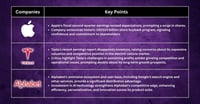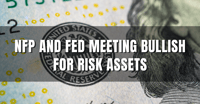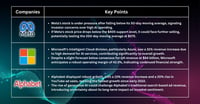The latest data on inflation presents a daunting scenario for Fed policymakers as they prepare for their upcoming meeting this week.It will be a hawkish meeting.
According to reports from the Commerce Department, prices continue to surge at a rate significantly above the central bank's target of 2% annually. Given these developments, it is unlikely that the Fed will cut interest rates soon, and we expect the officials to stress this part this week.
Indeed, recent data reveals that spending has consistently surpassed income levels for several consecutive months. Moreover, the personal savings rate has plummeted to its lowest point since October 2022, indicating that consumers are drawing down their savings to maintain their current consumption levels.
The key metric used by the Fed to gauge inflationary trends, the personal consumption expenditures price index, underscores the severity of the situation. In March, this index rose to 2.7% when factoring in all items, and it remained at 2.8% for the core measure that excludes volatile food and energy prices. These figures suggest that inflationary pressures are not only persistent but also widespread, affecting a broad range of goods and services consumed by Americans.
EUR/USD (Daily) is trading within a downward tunnel. This pair is still under bearish pressure and it may test the level of 1.0560 level.
The implications of this stubborn inflationary trend are far-reaching and potentially ominous. For one, it may compel the Federal Reserve to maintain higher interest rates for an extended period, a scenario that could dampen economic growth and undermine investor confidence. Furthermore, if inflationary pressures persist unabated, the Fed may even be forced to consider future rate hikes as a means of curbing inflation and restoring price stability.
Amid the growing concerns surrounding inflation and its potential impact on the economy, there emerges a glimmer of positivity for the US dollar. The prospect of the Fed opting to refrain from hiking interest rates in the near term could serve as a catalyst to bolster the currency's value. Higher interest rates often attract foreign investment, lending support to the dollar's strength in global markets.
Investors will also get an update on the labour picture next week, with the release of the April nonfarm payrolls report.
Economists expect 250,000 jobs added for the month. Though that would be a drop from March when the US economy added 303,000 jobs, the number is still enough to tell the Fed that the economy is strong and there is no rush to cut rates.
Thus far, a surprisingly resilient labour market has encouraged investors that Americans can withstand the impact of higher interest rates, dollar is unlikely to drop amid such an environment.
USD/JPY (Daily). After breaking the major resistance level of 152.00, this pair continued to rally and went beyond the Fibonacci Extension level of 61.8%. There is a potential to touch the next level at 163.50.
Fullerton Markets Research Team
Your Committed Trading Partner














